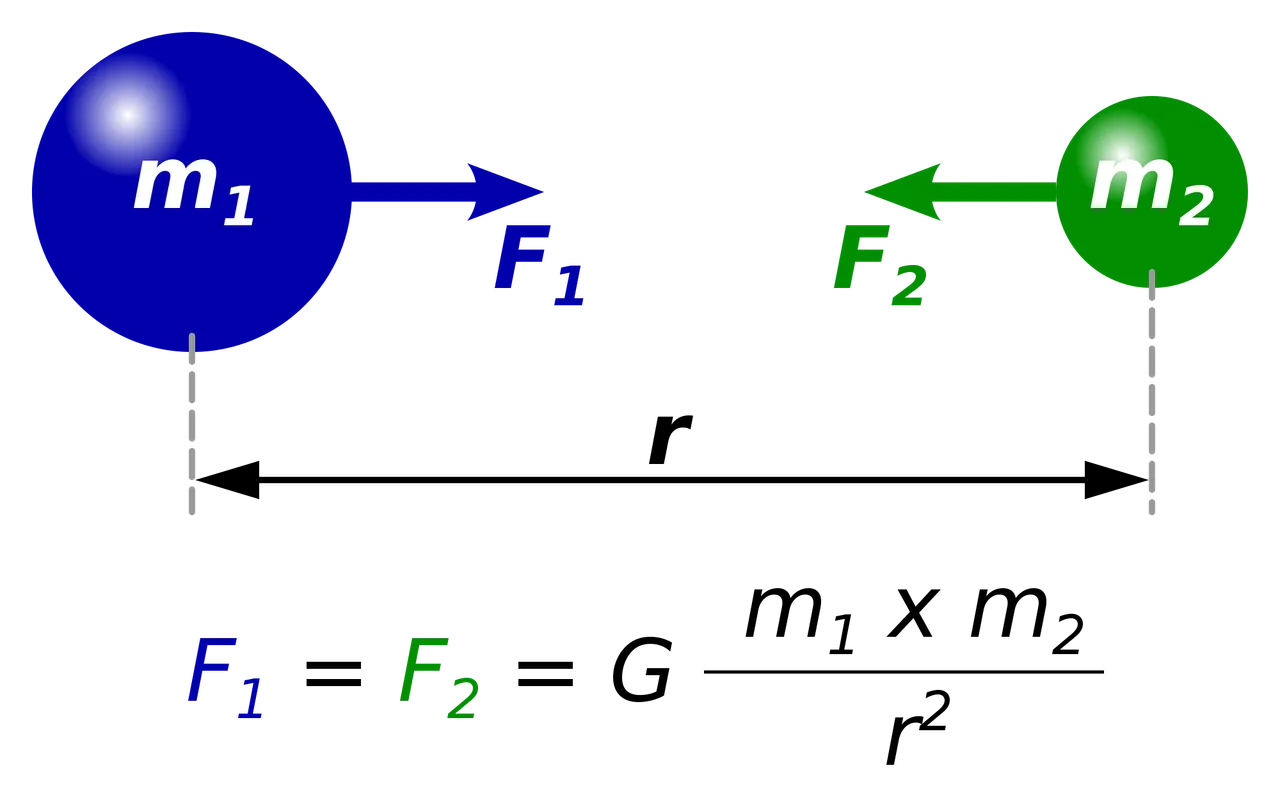You probably know gravity, but do you know that right now you are actually pulling from everything in the universe? Get more information about the force of gravity and learn the equation to calculate its pull on other objects.
There are many forces in the universe, a lot of push and pulls. We always press or drag someone, even if you are only on the ground. But it has been found in physics that there are actually only four fundamental forces from which all others are derived: strong force, weak force, electromagnetic force, and gravitational force.
The force of gravity is a force that attracts any two objects with mass. We call the force of gravity attractive because it always tries to pull people together, it never separates them.
In fact, everything, including you, is pulling every other object in the entire universe! This is called Newton's Universal Law of Gravitation. However you do not have very large mass and therefore, you are not dragging those other objects much. And objects that are really far from each other do not pull each other so much as to be noticed. But there is force and we can calculate it.
What is gravity?
The force of attraction differs at a distance between any two bodies in the universe called gravity or the force of gravity.
The gravitational force of attraction caused by the Earth on objects is called gravity (equal to the weight of the object).
Newton's Law of Universal Gravitation is used to explain the force of gravity. It is the rule that every big particle in the universe attracts every other particle, with a force that is directly related to their mass product

Source
Attracts particles with each other on a large scale that is directly proportional to the product of their masses and opposite to the square of the distance between them.
In general, the laws of physics are derived from observations made by inference. Another method of this rule, more modern, is this: 'Every point mass attracts every point mass, for this the force is on the line of intersection of both points.' Force is proportional to the multiplication of two masses. And the point is proportional to the square of the distance between the masses.
The force of gravity surrounds us. It determines how much weight we have and how far it will go before returning to the surface when we throw the boxet ball.
The force of gravity on Earth is equal to the force you apply on Earth. At rest, on or near the surface of the Earth, the force of gravity is equal to your weight. On various celestial bodies such as Venus or the Moon, the force of gravity is different from Earth, so if you put your weight on there, it will show you that you are different than the Earth.
When two objects are locked by gravity, their gravitational force is concentrated in an area that is not at the center of an object, but at the system's barrient. This principle is similar to a see-saw.
If two people of very different weight sit opposite the balance point, then the heavier person should sit closer to the balance point so that they equalize each other's mass. For example, if the heavier person weighs twice as much as the lighter one, he will have to sit only half the distance from the fruit.
The balance point is the mass center of the Si-Sau, such that the barreenter is the balance point of the Earth-Moon system. This point that actually revolves around the Sun in the Earth's orbit, while the Earth and the Moon revolve around the barrienter in each orbit.
Universal Gravitation Equation

Source
This equation describes the force between any two objects in the universe:
Gravitational force F = (G * m1 * m2) / (d2)
In this equation:
Where G is the gravitational constant, m 1 and m 2 are the masses of the two objects for which you are calculating the force, and d is the distance between the centers of gravity of the two masses.
The value of G is 6.67 x 10E-8 dyne * cm2 / gm2.
So if you place two 1-gram objects at 1 centimetre, they will attract each other with a force of 6.67 x 10E-8 dyne.
A dyne is equal to about 0.001 grams of weight, which means that if you have the amount of force available, it can lift 0.001 grams into the Earth's gravitational field. So 6.67 x 10E-8 dyne is a small force.
Gravity on Earth:
Gravity is very important to us. We cannot live on earth without it. The gravity of the Sun orbits the Earth, keeping us at a comfortable distance to enjoy the sunlight and heat. It is our atmosphere and the air we need to breathe. Gravity holds our world together.
However, gravity is not the same everywhere on Earth. Gravity is slightly higher on land with higher mass than in low mass locations. NASA uses two spacecraft to measure these variations in Earth's gravity. These spaceships are part of the Gravity Recovery and Climate Experiment (GRACE) missions.
Ref1
Ref 2

